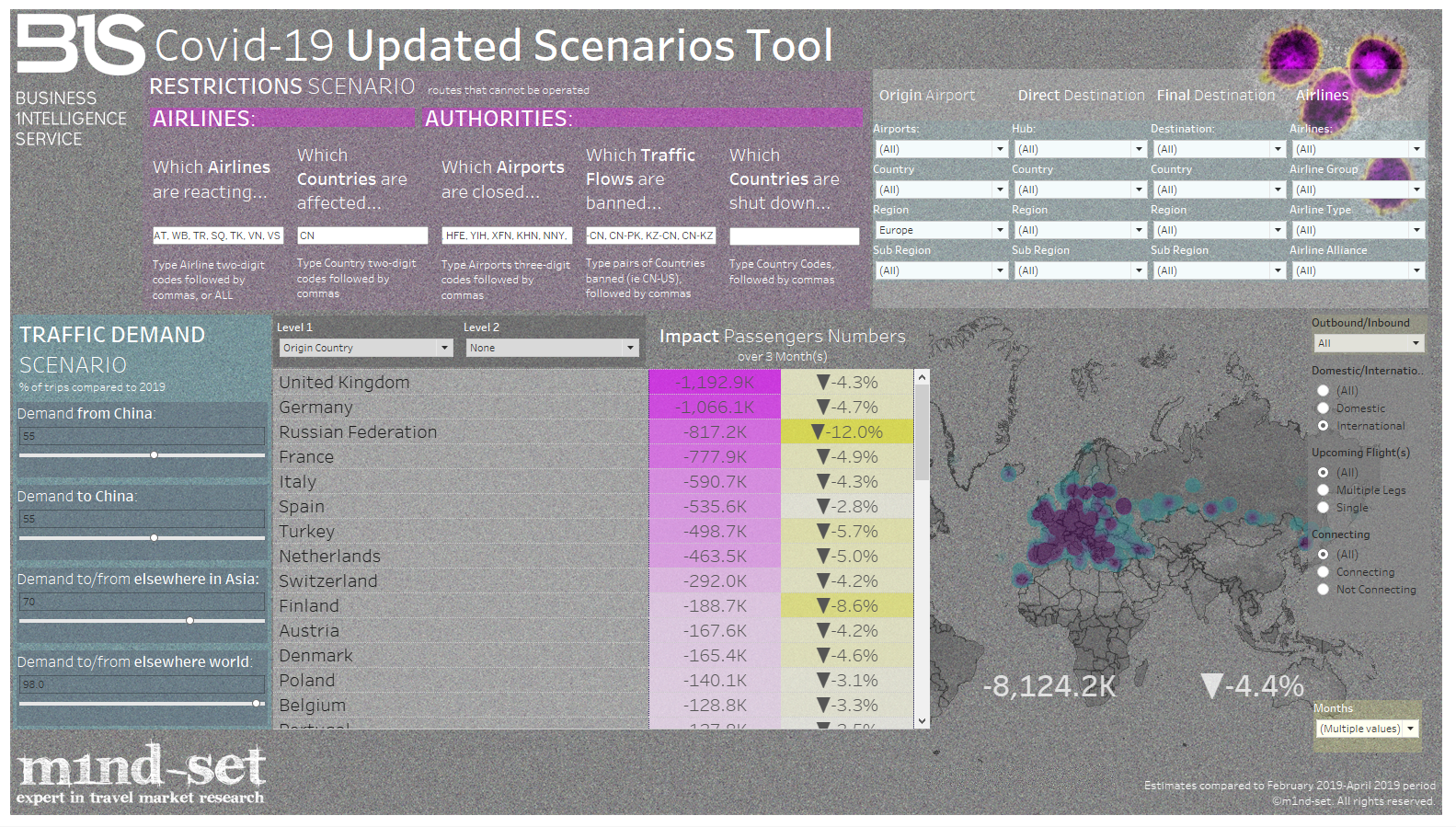New tool helps assess impact of coronavirus outbreak

A screenshot of m1nd-set’s new coronavirus scenarios tool
Swiss research firm m1nd-set has developed a new module to allow its subscribers to input any combination of scenarios to assess how their business may be affected by the temporary route and border closures introduced to stop the spread of the coronavirus.
The module allows for various severity scenarios: mild, moderate and severe, with varying degrees in the percentage decline of traffic demand to and from China, as well as demand around Asia and in the rest of the world over the months of February, March and April. This can be assessed both for domestic and international, separately or combined.
Looking at the impact on international departures alone, global air traffic would see a 7.1% decline in the mild scenario, a 9.6% drop in traffic in the moderate scenario and a 15.2% decline in the severe scenario.
Mild Scenario:
Asia Pacific: -19.1%
Middle East and Africa: -3.4%
Americas: -2.1%
Europe: -1.8%
Moderate Scenario:
Asia Pacific: -23.9%
Middle East and Africa: -5.4%
Americas: -3.5%
Europe: -3%
Severe Scenario:
Asia Pacific: -38.1%
Middle East and Africa: -9.7%
Americas: -5.3%
Europe: -4.5%
The new module has enabled companies across the travel retail sector to assess the real and potential impact on travel and adapt strategies and business plans accordingly.
All data is sourced from m1nd-set's comprehensive traffic and shopper insights tool, B1S (Business 1ntelligence Service).
m1nd-set’s Covid-19 scenarios tool uses the B1S airline traffic destinations database, which contains the full flight path (airline-origin, airport-direct destination and airport-final destination) for every single unique flight path (more than 3.4 billion) as well as ticket sales data from more than 4 billion passenger flight tickets over the past 12 months.
The model calculates the scenarios based on actual passenger numbers from the previous 12 months and adapts the data based on current restrictions, including airlines that have ceased operations to airports in China, countries that have banned passengers on certain routes or that have locked down the borders for all air traffic from China, all of which have a direct impact on actual traffic.
In addition, the model integrates traffic demand data, both to and from China as well as within Asia Pacific and across the rest of the world to take into account how the coronavirus is affecting demand globally. The traffic demand scenarios are then applied to every individual flight path to provide the most probable and realistic estimates on how traffic will be affected over the coming weeks and months.









.jpg?&resize.width=322&resize.height=483)
